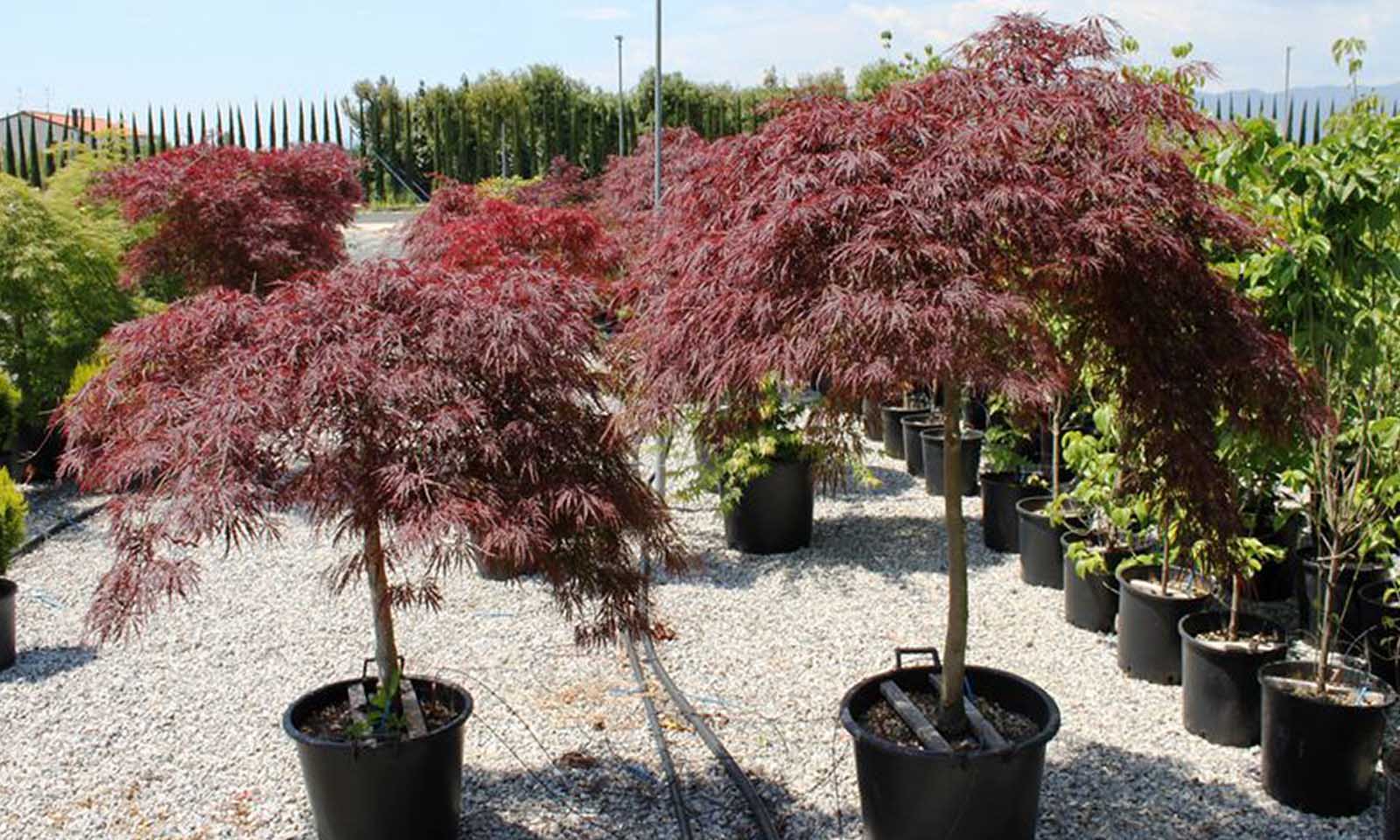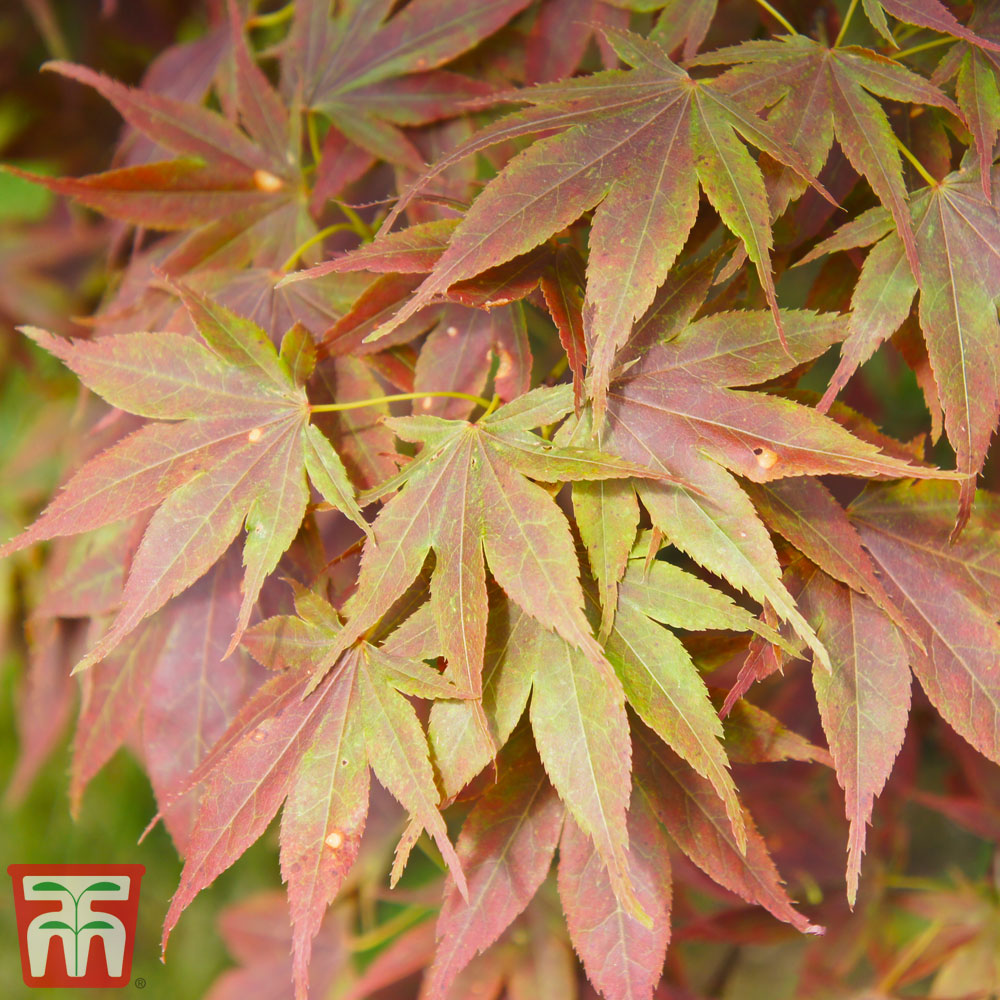“`html
Acer Palmatum: A Comprehensive Guide
Acer Palmatum: A Comprehensive Guide
The Acer palmatum, commonly known as the Japanese maple, is a deciduous shrub or small tree renowned for its delicate, finely dissected leaves and vibrant autumn colors. Originating from Japan, Korea, and eastern Mongolia, it has captivated gardeners and landscape designers worldwide for centuries. Its elegant form and diverse cultivars make it a prized specimen plant, suitable for a variety of garden styles, from traditional Japanese gardens to contemporary urban spaces.
Origins and History
The Acer palmatum’s journey began in the mountainous regions of East Asia, where it thrived in the cool, temperate climates. Its introduction to Western horticulture dates back to the 18th century, when European explorers brought specimens back from Japan. Since then, plant breeders have developed countless cultivars, each with unique characteristics related to leaf shape, color, and growth habit. The Japanese have cultivated maples for centuries, giving them names and associating them with specific aesthetic and philosophical meanings. This deep cultural connection has significantly influenced how these trees are perceived and used in gardens.
Botanical Characteristics
Leaf Morphology

The hallmark of the Acer palmatum is its palmate leaf structure, meaning the leaves are divided into lobes radiating from a central point, resembling the palm of a hand. The number of lobes typically ranges from five to nine, depending on the cultivar. Leaf margins can be serrated, lobed, or deeply dissected, creating a wide range of textures. The leaves emerge in spring, often displaying a vibrant array of colors, from bright green to deep red, and transform into a kaleidoscope of hues in autumn, including crimson, orange, and gold.
Growth Habit
Acer palmatum generally grows as a multi-stemmed shrub or small tree, reaching heights of 6 to 25 feet, depending on the cultivar and growing conditions. Its growth rate is typically slow to moderate, making it a low-maintenance addition to the garden. The branching pattern is often delicate and graceful, creating an open, airy canopy. Some cultivars exhibit a weeping or cascading form, adding a touch of drama to the landscape.
Bark and Branches
The bark of Acer palmatum is smooth and gray-brown, often displaying a subtle sheen. In winter, the bare branches reveal the tree’s intricate structure, adding visual interest to the garden. Young branches are typically slender and reddish-brown, contributing to the tree’s overall aesthetic appeal.
Flowers and Fruits
While the leaves are the primary attraction, Acer palmatum also produces small, inconspicuous flowers in spring. These flowers are typically reddish-purple and arranged in clusters. They are followed by winged fruits, known as samaras, which ripen in late summer or early autumn. Samaras are a characteristic feature of maple trees, aiding in seed dispersal by wind.
Cultivars and Varieties

The diversity of Acer palmatum cultivars is staggering, offering a wide range of choices for gardeners. Some popular cultivars include:
‘Dissectum’ Group
This group is known for its finely dissected, lace-like leaves. Cultivars like ‘Dissectum Atropurpureum’ and ‘Crimson Queen’ feature deep red foliage, while ‘Viridis’ has bright green leaves.
‘Atropurpureum’ Group
These cultivars are prized for their deep red or purple foliage, which retains its color throughout the growing season. ‘Bloodgood’ and ‘Emperor I’ are classic examples.
‘Linearilobum’ Group
This group is characterized by its long, narrow lobes. ‘Linearilobum’ and ‘Red Pygmy’ are popular choices.
‘Variegatum’ Group

These cultivars feature variegated leaves, with patterns of white, pink, or cream. ‘Butterfly’ and ‘Ukigumo’ are well-known examples.
‘Weeping’ Cultivars
These cultivars exhibit a cascading or weeping form, adding a dramatic element to the garden. ‘Waterfall’ and ‘Green Lace’ are popular choices.
Planting and Care
Site Selection
Acer palmatum thrives in a sheltered location with partial shade, especially in hot climates. It prefers well-drained, slightly acidic soil. Avoid planting in areas with strong winds or full sun, as these conditions can scorch the leaves.
Soil Preparation
Before planting, amend the soil with organic matter, such as compost or well-rotted manure, to improve drainage and fertility. Ensure the soil is well-drained, as Japanese maples are susceptible to root rot in waterlogged conditions.
Planting
The best time to plant Acer palmatum is in spring or autumn. Dig a hole twice as wide and just as deep as the root ball. Gently loosen the roots and place the tree in the hole, ensuring the top of the root ball is level with the soil surface. Backfill the hole with soil and water thoroughly.
Watering
Acer palmatum requires consistent moisture, especially during the first few years after planting. Water deeply and regularly, especially during dry periods. Avoid overwatering, as this can lead to root rot.
Fertilizing
Fertilize Acer palmatum in early spring with a balanced, slow-release fertilizer. Avoid over-fertilizing, as this can promote excessive growth and make the tree more susceptible to pests and diseases.
Pruning
Pruning is typically minimal for Acer palmatum. Remove dead, damaged, or crossing branches in late winter or early spring. Pruning can also be used to maintain the tree’s shape and encourage a more open canopy.
Mulching
Apply a layer of mulch around the base of the tree to retain moisture, suppress weeds, and regulate soil temperature. Use organic mulch, such as shredded bark or pine needles.
Pests and Diseases
Pests
Acer palmatum can be susceptible to several pests, including aphids, scale insects, and spider mites. Monitor the tree regularly and treat any infestations promptly with appropriate insecticides or horticultural oils.
Diseases
Common diseases affecting Acer palmatum include verticillium wilt, anthracnose, and powdery mildew. Ensure good air circulation and avoid overwatering to minimize the risk of disease. Treat any infections with appropriate fungicides.
Landscape Uses
Specimen Plant
The Acer palmatum’s elegant form and vibrant colors make it an ideal specimen plant, adding a focal point to any garden. It can be planted as a standalone tree or incorporated into mixed borders.
Japanese Gardens
Acer palmatum is an essential element of traditional Japanese gardens, where its delicate foliage and graceful form complement the serene atmosphere. It is often used in combination with other Japanese garden plants, such as azaleas and rhododendrons.
Container Gardening
Many dwarf cultivars of Acer palmatum are well-suited for container gardening, allowing them to be enjoyed on patios, balconies, and terraces. Ensure the container has adequate drainage and use a high-quality potting mix.
Woodland Gardens
Acer palmatum thrives in woodland settings, where it can benefit from the dappled shade and moist, well-drained soil. It can be planted alongside other shade-loving plants, such as ferns and hostas.
Urban Gardens
The compact size and slow growth rate of Acer palmatum make it an excellent choice for urban gardens, where space may be limited. Its vibrant colors and elegant form can add a touch of tranquility to even the smallest outdoor spaces.
Conclusion
The Acer palmatum, with its stunning foliage, elegant form, and diverse cultivars, is a truly remarkable tree that has captivated gardeners for centuries. Whether planted as a specimen tree, incorporated into a Japanese garden, or grown in a container, it adds a touch of beauty and tranquility to any landscape. With proper care and attention, this versatile tree will thrive and provide years of enjoyment.
“`
